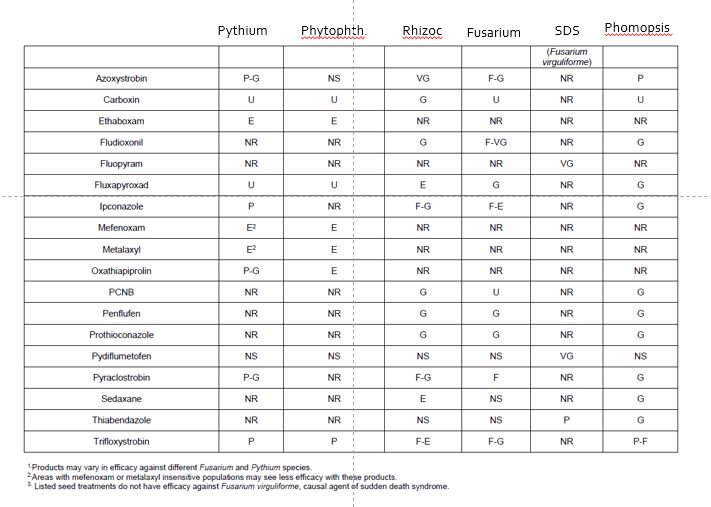There are many seedling diseases that affect corn and soybeans. These diseases can reduce root development, nutrient and water uptake, plant growth, and in severe cases, kill seedlings. One of the biggest issues in Illinois production fields are seedling diseases caused by different species of Pythium, especially early in the season when soils are wet and seedling emergence is slowed. Another article on seedling diseases and distinguishing many of the most common ones from oneanother can be found by clicking here.
Mild to moderately infected seedlings often are stunted and grow more slowly than healthy seedlings in the same field. The mesocotyls of infected seedlings (Figure 1) are often rotted instead of being healthy, firm, and white in color. The mesocotyl serves as a resource pipeline to the developing seedling, helping to move essential nutrients from the endosperm to the developing plant tissues. Severely infected seedlings may die and damp off before (preemergent) or after (post emergent) emerging from the soil. In some cases, the entire root system can be infected and appear yellow to brown. Often the outer tissues of the roots easily slough off and are water-soaked. If roots are slid between your fingers or uprooted from soils, the outer cortex will slough off, leaving only the inner root tissues. This is called “rat-tailing” and much like the hair style, it is not desirable.
Affected seedlings tend to occur in areas of the field that hold more water, such as low lying areas, turn rows, and other compacted areas of the field. Seedlings can survive mild to moderate Pythium infections if the root systems have developed adequately.
Figure 1. The mesocotyl of a corn plant, which can be rotted when damping off organisms infect corn seedlings. The mesocotyl acts like a straw, helping traffic carbon from the seed endosperm to the developing plant.
Pythium overwinters for many years in the absence of corn and soybeans, as recalcitrant oospores. Wet, conditions and the presence of corn or soybean seed nearby allow for the oospores to germinate and eventually produce small spores with the capacity to swim in soil water (zoospores). Root and seed exudates (amino acids, carbohydrates, secondary metabolites) attract the motile zoospores to seedling roots, and under the appropriate conditions, infection may occur.
Pythium species differ in their optimal temperature for causing disease, with some favored by cool and some by warm temperatures. The key factor for Pythium is excessive water – when soil is saturated for an extended period of time, regardless of the temperature, you may see Pythium associated damping off occur. A final thing to keep in mind is that there are Pythium that are saprophytic, meaning that they live on dead or decaying material. Therefore, if you have seedlings that are dying from some other factor (anoxia, chemical damage, insect damage) you could still find Pythium on the plants. Many times, multiple factors are involved in seedling rots and damping off.
Management of Pythium should focus on practices that promote germination and growth of your crop. Improving drainage in areas where water pools, and avoiding compaction are important. Planting seed into warm soils will further reduce the likelihood for severe Pythium-related seedling death. Ensure that planting depth is correctly set, and avoid planting deeper than recommended for optimal germination. There are several active fungicide active ingredients with efficacy on Pythium spp. However, the efficacy against specific species of Pythium may differ. Remember that seed treatments protect the germinating seedling, and in general only have about a 2-3 week window for controlling diseases. They do not fumigate soils, nor will they product submerged seedlings from drowning.


